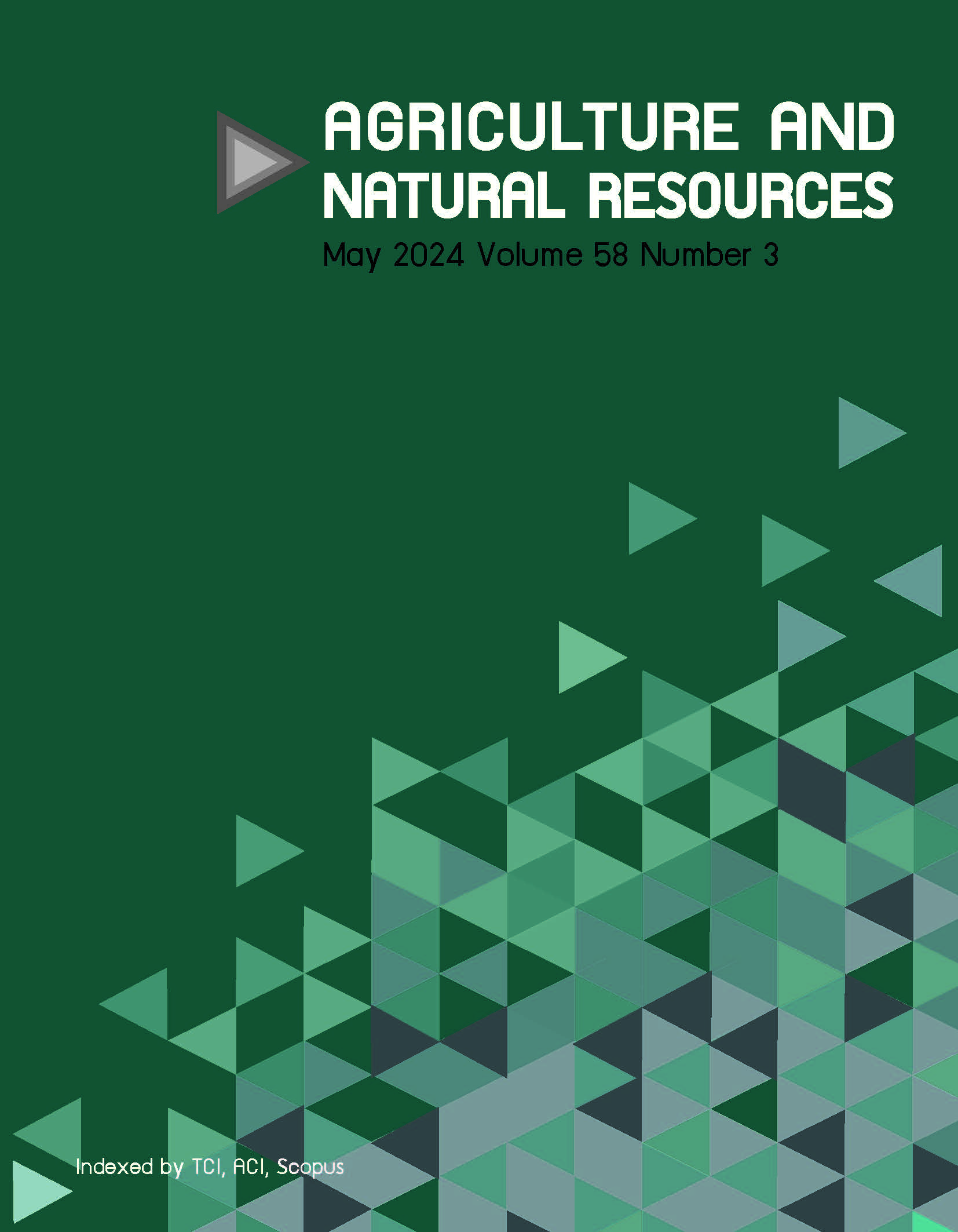Application of unmanned aerial vehicle with computer vision as a tool for welfare monitoring of cage-cultured, river-based hybrid red tilapia
Keywords:
Fish swimming velocity (FSV), Fish weight (FW), Tracker software, Unmanned aerial vehicle (UAV),, Water qualityAbstract
Importance of the work: An unmanned aerial vehicle (UAV) was used to monitor cage-cultured red tilapia and provide cost-effective welfare insights by correlating fish swimming velocity (FSV) with environmental factors.
Objectives: To investigate the relationship between FSV and the rearing environment by combining computer vision techniques and a UAV.
Materials & Methods: Data were collected from five cages in two rearing crops. The UAV was flown in the morning and evening (1 hour before feeding), with a total of 22 flights. Tracker software was utilized for FSV analysis. Water quality parameters, fish weight (FW), water temperature (Temp) and nitrite-nitrogen (NO2-N) were measured.
Results: The results showed that FSV had a positive correlation with FW (p < 0.01), Temp (p < 0.05) and NO2-N (p < 0.05). The FSV (in centimeters per second) could be obtained from the regression equation FSV = -7.681 + 0.007 FW + 0.416 Temp + 13.909 NO2-N with a coefficient of determination of 0.701. There was no significant difference between FSV and the estimate obtained using the tracking software (p > 0.05).
Main finding: The study utilized UAV and computer vision technology to monitor the welfare of cage-cultured red tilapia. There were positive correlations between FSV and FW, Temp and NO2-N, demonstrating a straightforward and effective approach to assessing aquaculture welfare. These results underscored the efficacy of UAV and computer vision in monitoring fish behavior, providing a cost-effective method. The findings should have important implications for enhancing farm management practices and advancing scientific knowledge in tilapia farming, ultimately leading to improvements in fish welfare and overall production efficiency.
Downloads
Published
How to Cite
Issue
Section
License
Copyright (c) 2024 Kasetsart University

This work is licensed under a Creative Commons Attribution-NonCommercial-NoDerivatives 4.0 International License.
online 2452-316X print 2468-1458/Copyright © 2022. This is an open access article under the CC BY-NC-ND license (http://creativecommons.org/licenses/by-nc-nd/4.0/),
production and hosting by Kasetsart University of Research and Development Institute on behalf of Kasetsart University.







